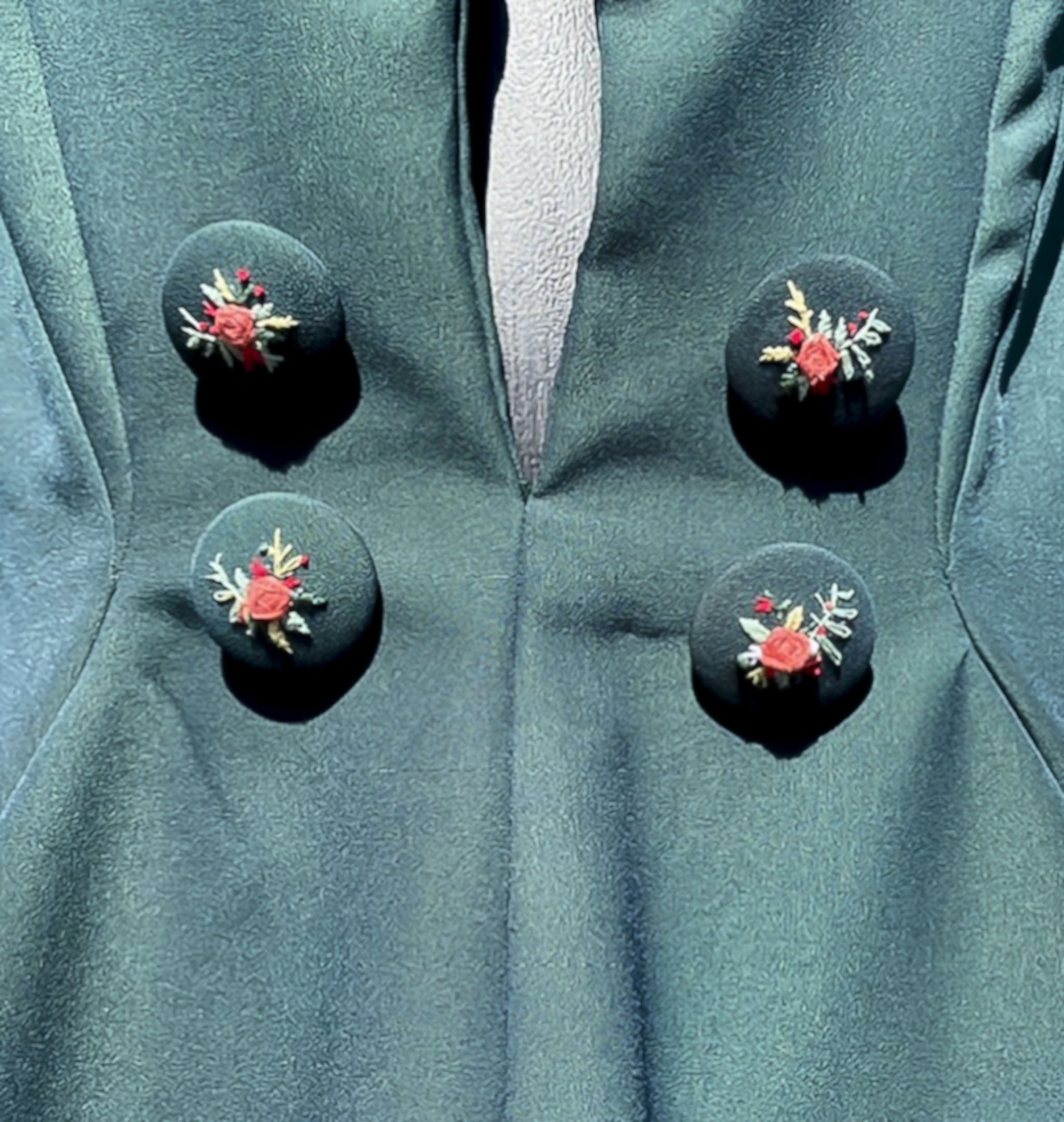"This Major Textile project is designed from inspiration of the late 1940s and early 1950s, including its popular floral prints and style aspects of the era such as defined waistlines, billowy skirts, long wide collars and swing coats. Additionally the Russian Pavlovsky Posad shawl was used as inspiration regarding floral prints and inspired the main colour scheme (reds, whites, pinks and greens) for the embroidery used in the project. The garment is a close fitting, mid-calf, coat dress with an inverted pleat at the centre back made from a double bonded crepe in a dark forest green, and a lining acetate fabric in a patterned pink/orange colour. The project has incorporated the techniques of embroidery to reflect the inspiration through four hand embroidered fabric buttons at the bodice, consisting of stitches including the French knot, woven wheel, stem stitch and more. Additionally, princess seams as seen at the bodice of the dress are a major technique used which provide shape and direction to emphasise the waistline as per the original inspiration. As a result of working on this MTP I have learned how to successfully troubleshoot and work to solve issues which arose during production. I was able to practice processing a complicated pattern, and understand the procedure of altering it, such as through adding lining to the garment. Many of the skills I learned through this MTP will aid me in future projects. I was challenged by learning to work with the acetate lining fabric on complicated techniques such as the princess seams. Its soft handle and slippery nature meant I often had trouble pinning and stitching the fabric correctly. As the project neared completion I was also challenged by working out the hemming technique of the dress due to the inverted pleat at the centre back which needed to have movement once the lining was also connected. Learning new techniques and being able to experiment to fully understand the fabric I worked with was extremely valuable to my learning experience. The most enjoyable aspect of the MTP overall was seeing the progression of my own work over a period of months which allowed me to understand and fully appreciate the work that goes into garments across the fashion industry, something which is often overlooked by the general public."

